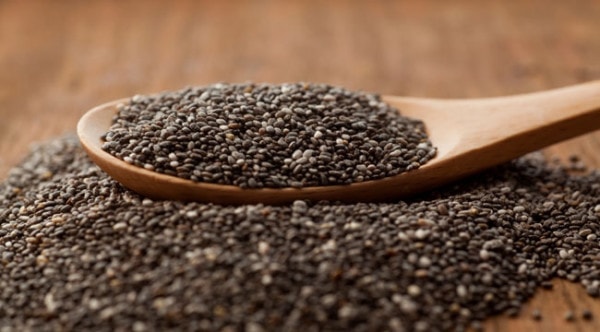About the Plant
The term “Chia” is a word that has been derived from the Nahuatl word “chian,” which means “oily.” The Salvia hispanica species is one of the two known Chia plants. The other plant species is the Salvia Columbariae, which is more popularly known and referred to as the “golden Chia.” This annual herb grows up to a meter in height, with leaves that are about 4 to 8 cm in length and 3 to 5 cm in width sprouting opposite of each other. The flowers of this plant are either white or purple. These flowers are produced by the plant in numerous clusters forming a spike at each of the stem’s end.
About the Seeds
The Chia plant is commercially grown for its seeds, a type of food that contains high amounts of essential omega 3 fatty acids. The Chia seeds yield about 25 to 35 percent of oil that is extractable, which include the α-linolenic acid, or the ALA. These seeds are usually small and oblong in size and have a nutlike flavor. These are also mottle-colored, usually brown, white, black, and gray. In today’s modern times, the plant is being cultivated commercially for its seeds not only in Guatemala and Mexico, but also in Argentina, Australia, Bolivia, and Ecuador.
The Nutritional Makeup of the Chia Seeds
One of the major factors that make Chia seeds stand out from the other types of seeds and grains is its excellent nutritional profile. These seeds contain higher amounts of essential fatty acids, amino acids, fiber, antioxidants, minerals, and protein compared to other more popular seeds and grains such as flax. The nutritional makeup of these seeds is comprised of the following:
- Essential Fatty Acids – Chia seeds are rich in various essential fatty acids, including Omega 3 fatty acids and Omega 6 fatty acids. In fact, this fruit is considered to be one of the most excellent sources of Omega 3 fatty acids as it has been found to have a significantly higher amount of this essential fatty acid than flax seed. The journal “Nutrition Research” has also reported that these seeds are the highest source of plant- based a-linolenic fatty acid.
- Fiber – Chia seeds are also considered to be one of the best sources for both insoluble and soluble fiber. A 25-gram portion of these seeds contains approximately 7 grams of fiber. This fiber content does not only increase the nutritional value of these seeds; it also results in the Chia forming into a gel when mixed with water. This makes the seeds versatile for food preparation and cooking, as well as assists in the digestive functions.
- Antioxidants – Chia seeds are also a great source for natural antioxidants. The antioxidant content of these seeds is not only responsible for its great nutritional profile, but also for its increased and longer shelf life. Unlike the popular flax, these seeds can be ground as well as stored without worrying about spoilages.
- Essential Minerals – Chia seeds offer a wide variety of essential minerals. The essential minerals that these seeds contain include iron, calcium, zinc, molybdenum, magnesium, manganese, phosphorus, and potassium.These seeds are also great sources of folic acid and niacin.
- Protein – Numerous studies and research have shown thatthe amounts of protein that the Chia seeds contain are significantly higher than that of other seeds and grains. In addition to this, the protein content of these seeds is also said to be of higher quality, which has been based on its amino acid composition. The only type of essential amino acid that theseseeds do not have is taurine.
Popular Uses and Applications of the Chia Seeds
Chia seeds, thanks to its excellent nutritional profile, are used in many different ways and applications. These seeds, when ground, are sometimes added to the coarse flour pinole. These seeds are also commonly placed in water as well as in fruit juices. The gelatin that these seeds form when soaked in water are used in food preparations, such as a thickening agent, in porridges, in puddings, and in gruels. The ground seeds are also used in baking breads, biscuits, and cakes.
The Different Health Benefits of the Chia Seeds
- Chia seeds are one of the best supplements that should be taken by individuals who would like to lose weight and get rid of excess body fats. These seeds are very filling, which makes its consumers eat significantly less.
- These seeds provide significant amounts of protein and calcium used by the body’s tissues. These seeds are also a great source of boron, which aids in the body’s assimilation and use of calcium.
- The essential nutrients that these seeds contain help support and promote proper brain functioning.
- Soaked seeds that have been consumed helps the body stay hydrated for a significantly longer amount of time as it also helps retain electrolytes present in the bodily fluids. This results in significantly improved and enhanced energy levels.
